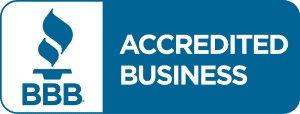Financial reports are the compasses that guide decision-making and strategy. Among them, the balance, income, and cash flow statements are the three most important financial documents.
Each report provides unique insights into the financial health of a business, and understanding them is key for entrepreneurs, investors, and stakeholders alike.
E3 Bookkeeping is committed to demystifying these financial reports so that you can harness their power to drive your business forward.
The Balance Sheet: A Snapshot of Financial Health
The balance sheet is a financial photograph of your company, capturing its fiscal status at a particular moment. It outlines what your business owns (assets), what it owes (liabilities), and the value left over for the owners (owner’s equity).
Think of it as a scale, balancing your resources (assets) against the claims on those resources (liabilities and equity).
Assets are resources with economic value, expected to provide future benefits. They are categorized as current (cash or convertible into cash within a year) and non-current (long-term investments).
Liabilities represent obligations and debts owed to outsiders or creditors and are similarly divided into current (due within a year) and long-term.
Owner’s Equity is the residual interest in the assets after deducting liabilities. It represents the owner’s claims on the business assets and is a critical indicator of the company’s financial health.
Understanding your balance sheet is crucial as it provides insights into your company’s financial stability, operational efficiency, and overall liquidity, guiding strategic decision-making.
The Income Statement: The Story of Profit and Loss
While the Balance Sheet captures a moment, the income statement (or profit and loss statement) tells a story over time, typically over a fiscal quarter or year. It outlines the company’s revenues, expenses, and profits or losses during a specific period and it’s vital for assessing the operational performance of your business.
Revenue (or sales) is the income earned from normal business operations. It’s the starting line from which costs and expenses are subtracted to determine the net income.
Expenses include the cost of goods sold (COGS), operating expenses (salaries, rent, utilities), and non-operating expenses like interest or taxes.
The bottom line, net income, is what remains after all expenses are subtracted from revenue. It’s a clear indicator of your business’s profitability and operational success.
Regularly reviewing your income statement can help you identify trends, manage expenses, and drive strategic growth.
The Cash Flow Statement: Understanding the Movement of Cash
Cash is the lifeblood of any business, and the cash flow statement is the report that tracks the flow of cash in and out of your business over a period. It provides insights into how well a company manages its cash position, indicating its ability to cover debts, fund operations, and make investments.
The cash flow statement is divided into three parts:
Operating activities detail cash generated or spent in the course of regular business operations. It adjusts net income for items that affected reported net income but didn’t affect cash.
Investing activities report the purchase and sale of long-term investments like property, plant, and equipment, providing a view of how much is being invested into maintaining or expanding the business.
Financing activities show the cash flows between the company and its owners and creditors – money borrowed, repayments, dividends paid, and so on.
A positive cash flow indicates a healthy liquidity position, essential for meeting obligations, avoiding excessive debt, and growing the business.
Integrating Financial Report Insights into Business Strategy
Understanding these three financial statements provides a comprehensive view of your business’s financial health.
The balance sheet shows where your business stands, the income statement shows how your business performed, and the cash flow statement shows how your business operated in terms of cash.
Integrating insights from these reports can help in:
Assessing financial health: Regular analysis can help you spot trends, manage cash flow effectively, and make informed decisions.
Identifying growth opportunities: Understanding your financial position can help you identify and capitalize on potential growth opportunities.
Attracting investors: Clear, comprehensive financial reports can build investor confidence, showing that your business is well-managed and has solid growth prospects.
Managing risks: By keeping a pulse on your financial health, you can anticipate and mitigate potential risks before they become problematic.
At E3 Bookkeeping, we understand that navigating through financial reports can be daunting. We can help you manage your books and ensure that you understand the story your financial data is telling.
With our expertise and your collaboration, you can transform these insights into strategic decisions, driving your business toward sustained growth and success.
Contact E3 Bookkeeping today at 918-576-7600 to explore how our services can transform your business’s financial management, leading to streamlined success and growth.







